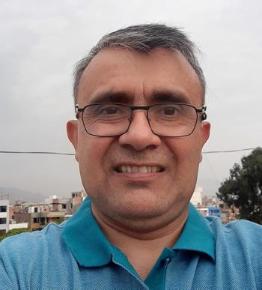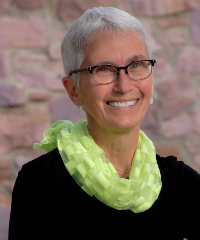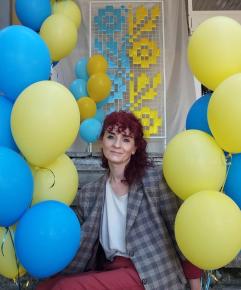Community Blogs
Community Blogs
Discover how the GLOBE community is engaging in all things GLOBE through the community blog posts below.
Learn how to create a GLOBE community blog post.
Filter By:
Blogs List
Konch jalaun Uttar Pradesh India dated 10/07/2025 time 0500 PM.
Temprature- 34 degree, Humidity-- 54%, Barometric pressure- 1003 Mbr,
Wind speed - 13 Km/h, Wind Direction - North West, Ozone 95, Wind
Chill- 39 degree, Dew Point - 23 degree, UV Index - Low, It is raining
heavily. Cloud Cover - 100%
Read More »
Posted in:
Curriculum:
EDUCATION RESEARCH
Field Campaigns:
SURFACE TEMPERATURE
GLOBE International STEM Network (GISN):
GLOBE INTERNATIONAL STEM NETWORK (GISN)
GLOBE Mission Earth News:
STUDENT RESEARCH & ACTIVITIES
GENERAL ACTIVITIES
GLOBE Science Topics:
CLIMATE
CLIMATE CHANGE
DATA INCLUDED
GLOBE PROTOCOLS
EARTH AS A SYSTEM
EARTH SYSTEM SCIENCE
GLOBE Working Groups:
SCIENCE WORKING GROUP
EDUCATION WORKING GROUP
Investigation Areas:
ATMOSPHERE
Learning Activities:
EARTH AS A SYSTEM
News Topics:
GLOBE MISSION EARTH
Konch Jalaun Uttar Pradesh India Dated 09/07/205 time 1310 PM.
Temprature- 36 degree, Humidity-- 42%, Barometric pressure- 999 Mbr,
Wind speed - 15 km/h, Wind Direction - North West, U V Index -
Modrate, Ozone 98 Cloud Cover - 100%, it is raining.
Posted in:
Curriculum:
EDUCATION RESEARCH
STEM
Field Campaigns:
SURFACE TEMPERATURE
GLOBE International STEM Network (GISN):
GLOBE INTERNATIONAL STEM NETWORK (GISN)
GLOBE Mission Earth News:
STUDENT RESEARCH & ACTIVITIES
GENERAL ACTIVITIES
GLOBE Science Topics:
CLIMATE
CLIMATE CHANGE
DATA INCLUDED
GLOBE PROTOCOLS
EARTH AS A SYSTEM
EARTH SYSTEM SCIENCE
GLOBE Working Groups:
SCIENCE WORKING GROUP
EDUCATION WORKING GROUP
Investigation Areas:
ATMOSPHERE
Learning Activities:
EARTH AS A SYSTEM
News Topics:
GLOBE MISSION EARTH
Greetings to all,
In Peru, we are aiming to work with wooden meteorological shelters.
However, we are facing a problem with the availability of equipment to
record air temperature and relative humidity. There is limited supply
of instruments and equipment in the country.
To measure air temperature and relative humidity, we have only two
types of instruments available in the Peruvian market: an alcohol
thermometer and a digital thermo-hygrometer, such as the one shown in
the image.
Our question is: What is the correct procedure to follow for
recording temperature ...
Posted in:
Konch jalaun uttar Pradesh India dated 01/07/2025 time 0330 AM.
Temprature- 29 degree, Humidity-- 71%, Barometric pressure- 1000 Mbr,
Cloud Cover - 100%, Wind Speed - 5 Km/h, Wind Direction - South West,
Wind Chill- 37 degree, Dew Point - 23 degree, Ozone - 100 , UV Index -
Low, Precipitation-4.59 mm. It is raining continuously since two days.
Up sky image us here of yesterday evening to watch weather now.--
Posted in:
Curriculum:
EDUCATION RESEARCH
Field Campaigns:
SURFACE TEMPERATURE
GLOBE International STEM Network (GISN):
GLOBE INTERNATIONAL STEM NETWORK (GISN)
GLOBE Mission Earth News:
STUDENT RESEARCH & ACTIVITIES
GENERAL ACTIVITIES
GLOBE Science Topics:
CLIMATE
CLIMATE CHANGE
DATA INCLUDED
GLOBE PROTOCOLS
EARTH AS A SYSTEM
EARTH SYSTEM SCIENCE
GLOBE Working Groups:
EVALUATION WORKING GROUP
SCIENCE WORKING GROUP
Investigation Areas:
EARTH AS A SYSTEM
Learning Activities:
EARTH AS A SYSTEM
News Topics:
GLOBE MISSION EARTH
Primary Audience:
SCIENTISTS
STUDENTS
Student Research Reports:
MISSION EARTH REPORT
Teacher's Guide:
DOCUMENT TYPES
Konch jalaun uttar pradesh India dated 30/06/2025 time 0500 PM.
Temprature- 30 degree, Humidity - 68%, Barometric pressure- 999 Mbr,
Wind speed - 6 km/h, Wind Direction - South West, Ozone - 101, Wind
Chill- 37 degree, Dew Point - 24 degree, Cloud Cover - 100%,
Precipitation-- 14.1 mm, UV Index - Low Rain Probability- 100%, it is
raining since morning. Up sky image is here to watch weather now.
Posted in:
Curriculum:
EDUCATION RESEARCH
Field Campaigns:
SURFACE TEMPERATURE
GLOBE International STEM Network (GISN):
GLOBE INTERNATIONAL STEM NETWORK (GISN)
GLOBE Mission Earth News:
STUDENT RESEARCH & ACTIVITIES
GLOBE Science Topics:
CLIMATE
CLIMATE CHANGE
DATA INCLUDED
GLOBE PROTOCOLS
EARTH AS A SYSTEM
EARTH SYSTEM SCIENCE
GLOBE Working Groups:
SCIENCE WORKING GROUP
EDUCATION WORKING GROUP
Investigation Areas:
EARTH AS A SYSTEM
Learning Activities:
EARTH AS A SYSTEM
News Topics:
GLOBE MISSION EARTH
Student Research Reports:
MISSION EARTH REPORT
I have made Cloud observation on 25/06/2025 at my location at the
time NOAA- 20 pass over. It matched with the passover satellite. Here
is the matched figure sent by LaRC cloud team. Worldview is also here
to watch all about sky conditions. Another screenshot is also here for
researchers to get out something new. Worldview layers are also
available on globe accordingly.
Posted in:
Curriculum:
EDUCATION RESEARCH
Field Campaigns:
SURFACE TEMPERATURE
GLOBE International STEM Network (GISN):
GLOBE INTERNATIONAL STEM NETWORK (GISN)
GLOBE Mission Earth News:
STUDENT RESEARCH & ACTIVITIES
GENERAL ACTIVITIES
GLOBE Science Topics:
CLIMATE
CLIMATE CHANGE
DATA INCLUDED
GLOBE PROTOCOLS
EARTH AS A SYSTEM
EARTH SYSTEM SCIENCE
GLOBE Working Groups:
SCIENCE WORKING GROUP
EDUCATION WORKING GROUP
Investigation Areas:
EARTH AS A SYSTEM
Learning Activities:
EARTH AS A SYSTEM
News Topics:
GLOBE MISSION EARTH
Student Research Reports:
STANDARD RESEARCH REPORT
MISSION EARTH REPORT
Konch jalaun Uttar Pradesh India Dated 28/06/2025 Time 0810
AM.Temprature - 32 Degree, Humidity-- 56%, Barometric pressure- 999
Mbr, Wind Speed - 8 Km/h, Wind Direction- North East, Wind Chill- 37
Degree, Dew Point - 22 degree, Ozone - 101, UV Index - Low, Cloud
Cover- - 100%, it is raining heavily, up sky image is here to watch
weather now.
Posted in:
Curriculum:
EDUCATION RESEARCH
Field Campaigns:
SURFACE TEMPERATURE
GLOBE International STEM Network (GISN):
GLOBE INTERNATIONAL STEM NETWORK (GISN)
GLOBE Mission Earth News:
STUDENT RESEARCH & ACTIVITIES
GENERAL ACTIVITIES
GLOBE Science Topics:
CLIMATE
CLIMATE CHANGE
DATA INCLUDED
GENERAL SCIENCE
GLOBE PROTOCOLS
EARTH AS A SYSTEM
EARTH SYSTEM SCIENCE
GLOBE Working Groups:
SCIENCE WORKING GROUP
EDUCATION WORKING GROUP
Learning Activities:
EARTH AS A SYSTEM
News Topics:
GLOBE MISSION EARTH
The Problem
You've got a list of AOI coordinates. Google Maps will show them to
you, but it won't tell you the best order to visit them. If you’ve got
more than a few points, this becomes a mess—guesswork, wasted time,
and unnecessary backtracking.
We need a tool that will plan the most efficient route for us instead
of figuring things out ourselves. That’s what this does, here’s how:
The Solution
This problem is a textbook example of the classic Traveling
Salesman Problem (TSP): How can we find the shortest route
that visits each location (in our ...
Posted in:
Curriculum:
TECHNOLOGY
STEM
GLOBE Science Topics:
EARTH AS A SYSTEM
Investigation Areas:
EARTH AS A SYSTEM
Konch jalaun uttar pradesh India dated 27/06/2025 time 0600 PM.
Temprature- 37 degree, Humidity- 50%, Barometric pressure- 999 Mbr,
Wind Speed - 21 Km/h, Wind Direction- South East, Wind Chill- 41
degree, Dew Point- 21 degree, Ozone - 108, UV Index - Low, Cloud Cover
- 100%, up sky image is here to watch weather now, Heavy Intensity
Rain is here continue since an hour.
Posted in:
Curriculum:
EDUCATION RESEARCH
STEM
Field Campaigns:
SURFACE TEMPERATURE
GLOBE International STEM Network (GISN):
GLOBE INTERNATIONAL STEM NETWORK (GISN)
GLOBE Mission Earth News:
STUDENT RESEARCH & ACTIVITIES
GENERAL ACTIVITIES
GLOBE Science Topics:
CLIMATE
CLIMATE CHANGE
DATA INCLUDED
GENERAL SCIENCE
GLOBE PROTOCOLS
EARTH AS A SYSTEM
EARTH SYSTEM SCIENCE
GLOBE Working Groups:
SCIENCE WORKING GROUP
EDUCATION WORKING GROUP
Investigation Areas:
EARTH AS A SYSTEM
Learning Activities:
EARTH AS A SYSTEM
News Topics:
GLOBE MISSION EARTH
Konch jalaun uttar pradesh India dated 26/06/2025 time 0940 AM.
Temprature- 34 degree, Humidity-- 50%, Barometric Pressure- 1001 Mbr,
Wind Speed - 21 Km/h, Wind Direction- East, Wind Chill- 37 degree, Dew
Point- 22 degree, Ozone - 110 , UV Index - High, Cloud Cover - 100%,
Overcast clouds. Rain probability- 100%, East sky image is here to
watch weather now.
Posted in:
Curriculum:
EDUCATION RESEARCH
STEM
Field Campaigns:
SURFACE TEMPERATURE
GLOBE International STEM Network (GISN):
GLOBE INTERNATIONAL STEM NETWORK (GISN)
GLOBE Mission Earth News:
STUDENT RESEARCH & ACTIVITIES
GENERAL ACTIVITIES
GLOBE Science Topics:
CLIMATE
CLIMATE CHANGE
DATA INCLUDED
GLOBE PROTOCOLS
EARTH AS A SYSTEM
EARTH SYSTEM SCIENCE
GLOBE Working Groups:
SCIENCE WORKING GROUP
EDUCATION WORKING GROUP
Investigation Areas:
ATMOSPHERE
Learning Activities:
EARTH AS A SYSTEM
News Topics:
GLOBE MISSION EARTH
Student Research Reports:
MISSION EARTH REPORT
Teacher's Guide:
DOCUMENT TYPES
30 років GLOBE
Posted in:
Konch jalaun uttar pradesh India dated 24/06/2025 time 0930 PM.
Temprature- 33, Humidity 56%, Barometric Pressure- 996 Mbr. Ozone -93
It is raining. Up sky image at 0700 PM. is here to watch weather now.
Posted in:
Curriculum:
EDUCATION RESEARCH
STEM
Field Campaigns:
SURFACE TEMPERATURE
GLOBE International STEM Network (GISN):
GLOBE INTERNATIONAL STEM NETWORK (GISN)
GLOBE Mission Earth News:
STUDENT RESEARCH & ACTIVITIES
GENERAL ACTIVITIES
GLOBE Science Topics:
CLIMATE
CLIMATE CHANGE
DATA INCLUDED
GENERAL SCIENCE
GLOBE PROTOCOLS
EARTH AS A SYSTEM
EARTH SYSTEM SCIENCE
GLOBE Working Groups:
SCIENCE WORKING GROUP
EDUCATION WORKING GROUP
Investigation Areas:
EARTH AS A SYSTEM
Learning Activities:
EARTH AS A SYSTEM
Student Research Reports:
MISSION EARTH REPORT
Konch Jalaun Uttar Pradesh India dated 24/06/2025 time 0840 AM.
Temprature- 31degree, Humidity-- 66%, Barometric Pressure- 996 Mbr,
Wind Speed - 12 Km/h, Wind Direction- North East, Wind Chill- 37
degree, Dew Point - 24 degree, , Ozone - 98 ,UV Index - Low,
Precipitation-- 6.55 mm, Rain Probability- 100%, Cloud Cover - 77%,
East sky image is here to watch weather now.
Posted in:
Curriculum:
EDUCATION RESEARCH
STEM
Field Campaigns:
SURFACE TEMPERATURE
GLOBE International STEM Network (GISN):
GLOBE INTERNATIONAL STEM NETWORK (GISN)
GLOBE Mission Earth News:
STUDENT RESEARCH & ACTIVITIES
GENERAL ACTIVITIES
GLOBE Science Topics:
CLIMATE
CLIMATE CHANGE
DATA INCLUDED
GLOBE PROTOCOLS
EARTH AS A SYSTEM
EARTH SYSTEM SCIENCE
SCIENTIST SKILLS
GLOBE Working Groups:
SCIENCE WORKING GROUP
EDUCATION WORKING GROUP
Investigation Areas:
ATMOSPHERE
Learning Activities:
EARTH AS A SYSTEM
News Topics:
GLOBE MISSION EARTH
Primary Audience:
SCIENTISTS
Student Research Reports:
MISSION EARTH REPORT
Konch Jalaun Uttar Pradesh India Dated 23/06/2025 time 0530 PM.
Temprature- 35 degree, Humidity-- 50%, Barometric Pressure- 996 Mbr.
Cloud Cover - 100%, Wind Speed- 7 Kn/h, Wind Direction- North West,
Wind Chill- - 41 degree, Dew Point - 23 Degree, Ozone - 95, Rain
Probability- 100%, Precipitation-- 16.4 mm. UV Index - Low, It is not
raining now. Sky is covered by broken clouds at present.
Posted in:
Curriculum:
EDUCATION RESEARCH
STEM
Field Campaigns:
SURFACE TEMPERATURE
GLOBE International STEM Network (GISN):
GLOBE INTERNATIONAL STEM NETWORK (GISN)
GLOBE Mission Earth News:
STUDENT RESEARCH & ACTIVITIES
GENERAL ACTIVITIES
GLOBE Science Topics:
CLIMATE
CLIMATE CHANGE
DATA INCLUDED
GENERAL SCIENCE
GLOBE PROTOCOLS
EARTH AS A SYSTEM
EARTH SYSTEM SCIENCE
SCIENTIST SKILLS
GLOBE Working Groups:
SCIENCE WORKING GROUP
EDUCATION WORKING GROUP
Investigation Areas:
EARTH AS A SYSTEM
Learning Activities:
EARTH AS A SYSTEM
News Topics:
GLOBE MISSION EARTH
Student Research Reports:
MISSION EARTH REPORT
Konch jalaun uttar pradesh India dated 22/06/2025 time 0340 PM.
Temprature- 36 degree, Humidity-- 42%, Barometric Pressure- 997 Mbr,
Cloud Cover - 100%, Wind Speed - 7 km/h, Wind Direction- North East,
Wind Chill- 42 degree, Dew Point - 23 degree, Ozone - 103, UV Index -
Low, Rain Probability- 100%, Precipitation-- 4.85 mm. It is is raining
since two hours. Up sky image is here to watch weather now.
Posted in:
Curriculum:
EDUCATION RESEARCH
Field Campaigns:
SURFACE TEMPERATURE
GLOBE International STEM Network (GISN):
GLOBE INTERNATIONAL STEM NETWORK (GISN)
GLOBE Mission Earth News:
STUDENT RESEARCH & ACTIVITIES
GENERAL ACTIVITIES
GLOBE Science Topics:
CLIMATE
CLIMATE CHANGE
DATA INCLUDED
GLOBE PROTOCOLS
EARTH AS A SYSTEM
EARTH SYSTEM SCIENCE
GLOBE Working Groups:
SCIENCE WORKING GROUP
EDUCATION WORKING GROUP
Investigation Areas:
ATMOSPHERE
News Topics:
GLOBE MISSION EARTH
Primary Audience:
SCIENTISTS
STUDENTS
Student Research Reports:
MISSION EARTH REPORT
Teacher's Guide:
DOCUMENT TYPES
Konch Jalaun Uttar Pradesh India dated 19/06/2025 time 0800 PM.
Temprature- 35 degree, Humidity-- 50%, Barometric pressure- 996 Mbr,
Precipitation-- 7.37 mm, Rain Probability- 100%, wind Speed- 7 km/h,
Wind Direction- East, Wind Chill- 40 degree, Dew Point - 23 degree,
Ozone - 108 , UV Index - Low, Cloud Cover- 100%, Heavy Intensity Rain
is here. It is raining now since three hours. Electricity and
thundering clouds are here. It may be through out the night today it seems.
Posted in:
Curriculum:
EDUCATION RESEARCH
STEM
Field Campaigns:
SURFACE TEMPERATURE
GLOBE International STEM Network (GISN):
GLOBE INTERNATIONAL STEM NETWORK (GISN)
GLOBE Mission Earth News:
STUDENT RESEARCH & ACTIVITIES
GENERAL ACTIVITIES
GLOBE Science Topics:
CLIMATE
CLIMATE CHANGE
DATA INCLUDED
GLOBE PROTOCOLS
EARTH AS A SYSTEM
EARTH SYSTEM SCIENCE
GLOBE Working Groups:
SCIENCE WORKING GROUP
EDUCATION WORKING GROUP
Investigation Areas:
EARTH AS A SYSTEM
News Topics:
GLOBE MISSION EARTH
Primary Audience:
SCIENTISTS
Teacher's Guide:
INVESTIGATION AREA DOCUMENTS
konch Jalaun Uttar Pradesh India dated 17/06/2025 time 0650 PM.
Temprature- 37 degree, Humidity-- 36%, Barometric pressure- 998 Mbr,
Wind Speed - 9 km/h, Wind Direction- South, Wind Chill- 40 degree, Dew
Point - 19 Degree, Ozone - 91 U V Index - Low, Rain Probability- 100%,
Precipitation--- 2.07 mm. Up sky image is here to watch weather now.
It is raining with thunder storm electricity is shining in the sky.
Posted in:
Curriculum:
EDUCATION RESEARCH
STEM
Field Campaigns:
SURFACE TEMPERATURE
GLOBE International STEM Network (GISN):
GLOBE INTERNATIONAL STEM NETWORK (GISN)
GLOBE Mission Earth News:
STUDENT RESEARCH & ACTIVITIES
GENERAL ACTIVITIES
GLOBE Science Topics:
CLIMATE
CLIMATE CHANGE
DATA INCLUDED
GENERAL SCIENCE
GLOBE PROTOCOLS
EARTH AS A SYSTEM
EARTH SYSTEM SCIENCE
GLOBE Working Groups:
SCIENCE WORKING GROUP
EDUCATION WORKING GROUP
Investigation Areas:
EARTH AS A SYSTEM
Learning Activities:
EARTH AS A SYSTEM
News Topics:
GLOBE MISSION EARTH
Primary Audience:
SCIENTISTS
Student Research Reports:
MISSION EARTH REPORT
Konch Jalaun Uttar Pradesh India dated 15/06/2025 time 0500 PM.
Temprature- 43 degree, Humidity-- 21%, Barometric Pressure- 997Wind
Speed - 10 Kn/h, Wind Direction- South, Wind Chill- 45 degree, Dew
Point - 15 degree, Ozone - 95, UV Index - Low, Cloud Cover - 40%,
Rain probability- 50%, Up sky image is here to watch weather now.
Posted in:
Curriculum:
EDUCATION RESEARCH
STEM
Field Campaigns:
SURFACE TEMPERATURE
GLOBE International STEM Network (GISN):
GLOBE INTERNATIONAL STEM NETWORK (GISN)
GLOBE Mission Earth News:
STUDENT RESEARCH & ACTIVITIES
GENERAL ACTIVITIES
GLOBE Science Topics:
CLIMATE
CLIMATE CHANGE
DATA INCLUDED
GENERAL SCIENCE
GLOBE PROTOCOLS
EARTH AS A SYSTEM
EARTH SYSTEM SCIENCE
GLOBE Working Groups:
SCIENCE WORKING GROUP
EDUCATION WORKING GROUP
Investigation Areas:
EARTH AS A SYSTEM
Learning Activities:
EARTH AS A SYSTEM
News Topics:
GLOBE MISSION EARTH
Primary Audience:
SCIENTISTS
Teacher's Guide:
DOCUMENT TYPES
कोंच जालौन उत्तर प्रदेश भारत दिनांक 15/06/2025 समय 0250 पूर्वाह्न
तापमान- 37 डिग्री, तापमान-- 32%, बैरोमीटर का दबाव- 998 ओजोन- 103,
क्लाउड कवर 100%, वर्षा-- 2.42 मिमी। हवा ठंडी - 39 डिग्री, ओस बिंदु -
18 डिग्री, हवा की गति - 5 किमी/घंटा, हवा की दिशा - दक्षिण पश्चिम। यहाँ
गरजने वाले बादल हैं और बिजली चमक रही है। U V Index - कम, अभी बारिश हो
रही है।
Posted in:
Curriculum:
EDUCATION RESEARCH
STEM
Field Campaigns:
SURFACE TEMPERATURE
GLOBE International STEM Network (GISN):
GLOBE INTERNATIONAL STEM NETWORK (GISN)
GLOBE Mission Earth News:
STUDENT RESEARCH & ACTIVITIES
GENERAL ACTIVITIES
GLOBE Science Topics:
CLIMATE
CLIMATE CHANGE
DATA INCLUDED
GLOBE PROTOCOLS
EARTH AS A SYSTEM
EARTH SYSTEM SCIENCE
GLOBE Working Groups:
SCIENCE WORKING GROUP
EDUCATION WORKING GROUP
Investigation Areas:
ATMOSPHERE
Learning Activities:
EARTH AS A SYSTEM
News Topics:
GLOBE MISSION EARTH
Primary Audience:
SCIENTISTS
STUDENTS
Student Research Reports:
MISSION EARTH REPORT
Konch Jalaun Uttar Pradesh India dated 13/06/2025 time 0740 PM.
Temprature- 41 degree, Humidity-- 25%, Barometric Pressure-- 1000 Mbe,
Cloud Cover- 0%, Wind Speed - 11 Km/h, Wind Direction- North East,
Wind Chill -43 degree, Dew Point - 17 degree, Ozone - 110 U V Index -
Low, Up Sky image is here to watch weather conditions now.
Posted in:
Curriculum:
EDUCATION RESEARCH
STEM
Field Campaigns:
SURFACE TEMPERATURE
GLOBE International STEM Network (GISN):
GLOBE INTERNATIONAL STEM NETWORK (GISN)
GLOBE Mission Earth News:
STUDENT RESEARCH & ACTIVITIES
GENERAL ACTIVITIES
GLOBE Science Topics:
CLIMATE
CLIMATE CHANGE
DATA INCLUDED
GENERAL SCIENCE
GLOBE PROTOCOLS
EARTH AS A SYSTEM
EARTH SYSTEM SCIENCE
GLOBE Working Groups:
SCIENCE WORKING GROUP
EDUCATION WORKING GROUP
Investigation Areas:
EARTH AS A SYSTEM
Learning Activities:
EARTH AS A SYSTEM
News Topics:
GLOBE MISSION EARTH
Primary Audience:
SCIENTISTS
Student Research Reports:
MISSION EARTH REPORT
Teacher's Guide:
DOCUMENT TYPES
—
20 Items per Page









